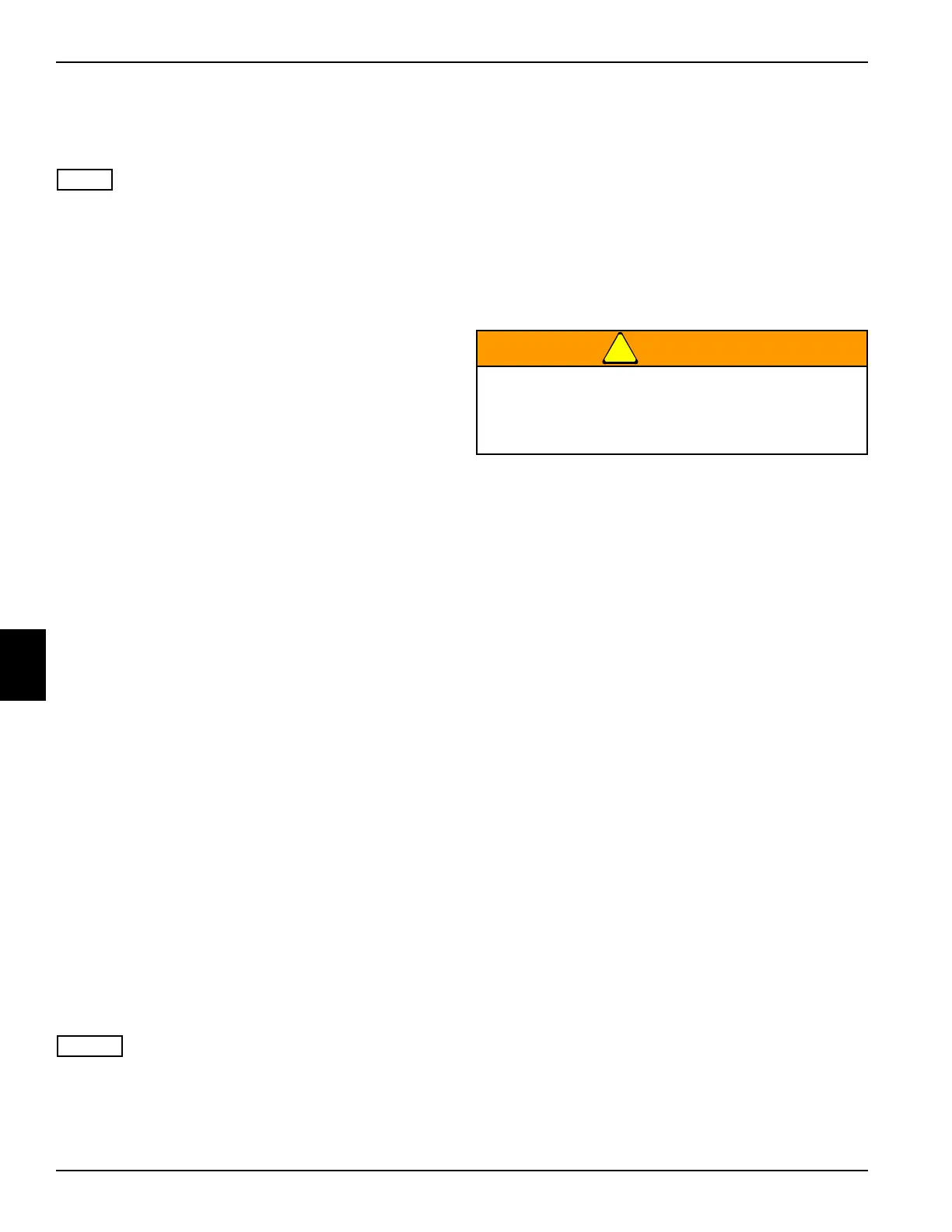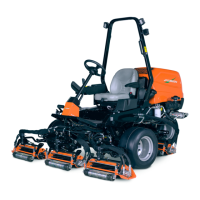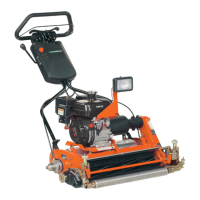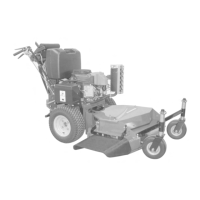6-22 4181383 First Edition
HYDRAULICS
6
Power Steering Circuit Test
The purpose of this test is to determine if the steering
cylinder and the steering valve are operating properly.
NOTE
Before performing this test, check the steering system for
mechanical binding or damage that may affect the
steering.
1. Operate the machine until hydraulic oil reaches
operating temperature, 120—150°F (49—65°C).
2. With the engine running, turn the steering wheel all
the way to the right, and then all the way to the left.
Does the steering wheel continue to turn after full
left or right movement of the steering cylinder?
YES Proceed to step 3.
NO Steering system is not faulty.
3. Stop the engine and remove both hydraulic hoses
from the steering cylinder; plug the hoses and cap
the cylinder ports.
4. Start the engine and turn the steering wheel all the
way to the right and then all the way to the left. Only a
little movement should be evident.
Is the steering wheel hard to turn or does not
turn?
YES Steering cylinder is faulty; repair or replace
as needed. (See “Steering Cylinder” on
page 7-19.)
With steady pressure in one direction, does
steering wheel make one complete revolution in
30 seconds?
YES Steering valve is faulty; repair or replace as
needed. (See “Steering Valve” on page 7-7.)
Cutting Unit System Test
The cutting unit system consists of two circuits: the front
cutting unit circuit and the rear cutting unit circuit. The
front cutting unit circuit consists of the front cutting unit
pump, deck valve, right front cutting unit motor, and left
front cutting unit motor. The rear cutting unit circuit
consists of the rear cutting unit pump, deck valve, left rear
cutting unit motor, center cutting unit motor, and right rear
cutting unit motor. This test determines if one of the
cutting unit motors is faulty. An instrument test must be
performed to isolate the performance of the cutting unit
pumps and deck valve.
NOTES
• Perform test on only one cutting unit motor at a time.
• The case drain on a hydraulic motor is used to return
lubrication or bypassed hydraulic oil back to the
hydraulic tank.
1. Operate the machine until hydraulic oil reaches
operating temperature, 120—150°F (49—65°C).
2. Stop the engine and remove the key.
3. Bypass the seat switch.
4. Remove the case drain hose from the cutting unit
motor. Immediately plug the hose.
5. Position a drain pan with a minimum capacity of 1
gallon (3.8 L) near the cutting unit motor.
6. Install a separate hose on the case drain fitting and
place the free end in the container. Secure the hose
to prevent spills.
!
WARNING
7. Install suitable blocking device or tool in cutting unit,
preventing cutting unit from turning.
8. Set the park brake and start the engine.
9. Disconnect park brake switch. (See “Park Brake
Proximity Switch” on page 4-73.)
10. Place the mow switch in the ON position for 15
seconds.
11. Stop the engine and remove the ignition key.
12. Measure the amount of oil that flowed from the case
drain. The amount x 4 = amount per minute.
Is the oil captured from the case drain within a
half pint per minute?
YES The motor shaft and/or bearings are not
faulty; proceed with an instrument test. (See
“Instrument Test Procedure” on page 6-23.)
Is the oil captured from the case drain more than
1 pint per minute?
YES The motor may be faulty; repair or replace as
needed. (See “Cutting Unit Motors” on
page 6-43.)
13. Disconnect and remove test equipment. Install all
hoses, fittings, and components as noted prior to
removal.
Safely block cutting unit from rotating using a
suitable device or tool. Failure to follow
appropriate safety precaution may result in death
or serious injury.

